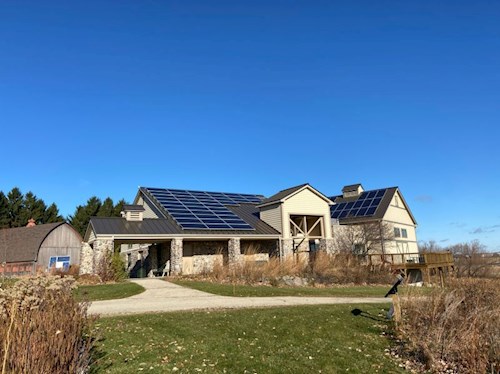

Almost eighteen months ago we awarded the contract for Dane County’s Comprehensive Energy Assessment to HGA, a national engineering and design firm with offices in Middleton.
At the time, County Executive Joe Parisi said:
“Dane County has been a national leader combating climate change by reducing energy use and using renewable energy in our facilities for more than a decade. This assessment will identify the next set of opportunities to green our facilities, giving us a roadmap to our 2030 net-zero carbon goal.”
This assessment is a roadmap for where we can reduce emissions within Dane County government facilities. Overall our aim is to cut both facility and fleet emissions while increasing natural carbon sequestration via Dane County land projects in so that by 2030 the amount of carbon we sequester is larger than our emissions on an annual basis. This is carbon neutrality.
I am not aware of any other county that has a 2030 carbon neutrality target like ours, but I am confident Dane County will reach this goal. After all earlier this year we were the first County in Wisconsin (and just the fourth in the nation) to receive all of our electricity from renewable sources. We are committed to making carbon neutrality a reality and hitting milestones like the roadmap increase the likelihood that our 2030 goal is within reach.
A good map includes the details you need to stay on course
When initiating our work with HGA we knew the basic strategies that Dane County would use to reduce emissions. Reducing emissions means eliminating waste (via energy efficiency and conservation efforts) and transitioning our facilities to clean fuels (like renewable electricity and renewable natural gas). Part of that transition will be a shift from burning methane gas in buildings to using high efficiency electrical heating and cooling systems (such as geothermal heat pumps).
The challenge, of course, is the details. Which facilities are best suited for geothermal systems? Where can we save energy with new technologies? Which projects are most cost effective? Where can we leverage Inflation Reduction Act (IRA) elective pay credits to increase cost effectiveness?
Our contractor, HGA, specified these details in the final report that will help us ensure we stay on track toward our goals.
Maps are most powerful when you use them to reach a destination
In the same way that maps are best used to reach a destination, comprehensive energy reports are meant to be used to guide project implementation. From this report we will be working with a variety of Dane County departments to implement the recommendations from the report. Indeed, Dane County Executive Parisi has already recommended funding for several solar projects in his 2024 budget. And you can expect to see more roadmap-related projects in the coming years.
We know where we want to go and have a detailed roadmap for how to get there. Now it's time to get going.

Kathy is the Director of the Dane County’s Office of Energy and Climate Change. In that role she's leading efforts to implement the Climate Action Plan. Prior to coming to Dane County, Kathy led Cool Choices and, prior to that, she led Wisconsin's Focus on Energy program.
The Dane County Office of Energy & Climate Change maintains this blog as a way to offer:
To be sure that you don't miss new blog entries, subscribe to our email updates.